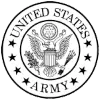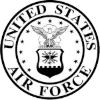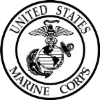Available 24/7
Professional Instruction
Free Training Materials






Course Details
The AZ-301: Azure Solutions Architect-Design course is a 4-day course that is designed to teach students how to manage security and identity within the context of Azure. Students will also be explosed to the multiple SaaS services available in Azure that for integration into existing Azure solutions.
Additionally, students will learn to Compare and contrast various database options on Azure, identify data streaming options for large-scale data ingest, and identify longer-term data storage options. The course will show students how to deploy an ARM template to a resource group, author a complex deployment using the Azure Building Blocks tools, and integrate an API or Logic App with the API Management service.
The final sections of the course will help students learn how to Describe DNS and IP strategies for VNETs in Azure, compare connectivity options for ad-hoc and hybrid connectivity, distribute network traffic across multiple loads using load balancers, and design a hybrid connectivity scenario between cloud and on-premise.
Topics covered in the course include:
- Integrating existing solutions with external identity providers using Azure AD B2B or B2C.
- Designing a hybrid identity solution.
- Determining when to use advanced features of Azure AD such as Managed Service Identity, MFA and Privileged Identity Management.
- Securing application secrets using Key Vault.
- Securing application data using SQL Database and Azure Storage features.
- Detailing the various APIs available in Cognitive Services.
- Identifying when to use the Face API, Speech API or Language Understanding (LUIS) service.
- Describing the relationship to Bot Framework and Azure Bot Services.
- Determining the ideal pricing option for Azure Storage based on a solutions requirements.
- Identifying performance thresholds for the Azure Storage service.
- Determining the type of Storage blobs to use for specific solution components.
- Using the Azure Files service for SMB operations.
- Identifying solutions that could benefit from the use of StorSimple physical or virtual devices.
- Comparing and contrasting monitoring services for applications, the Azure platform, and networking.
- Designing an alert scheme for a solution hosted in Azure.
- Selecting the appropriate backup option for infrastructure and data hosted in Azure.
- Automating the deployment of future resources for backup recovery or scaling purposes.
- Creating a resource group.
- Adding resources to a resource group.
- Deploying an ARM template to a resource group Integrate an API or Logic App with the API Management service.
- Designing an App Service Plan or multi-region deployment for high performance and scale.
- Integrating an API or Logic App with the API Management service.
- Designing an App Service Plan or multi-region deployment for high performance and scale.
- Describing various patterns pulled from the Cloud Design Patterns.
- Distribute network traffic across multiple loads using load balancers.
- Designing a hybrid connectivity scenario between cloud and on-premise.
- Designing an availability set for one or more virtual machines.
- Describing the differences between fault and update domains.
- Authoring a VM Scale Set ARM template.
Target Student:This course is intended for Cloud Solutions Architects.
Students should have the following prerequisite experience:
- Practical experience with operating systems.
- Experience with virtualization
- Experience with cloud infrastructure
- Experience with storage structures
- Experience with billing and networking.
AZ-301T01: Designing for Identity and Security Section 1: Managing Security & Identity for Azure Solutions This section discusses both security and identity within the context of Azure. For security, this section reviews the various options for monitoring security, the options available for securing data and the options for securing application secrets. For identity, this section focuses specifically on Azure Active Directory (Azure AD) and the various features available such as Multi-Factor Authentication (MFA), Managed Service Identity, Azure AD Connect, ADFS and Azure AD B2B/B2C. Section 2: Integrating SaaS Services Available on the Azure Platform This section introduces multiple SaaS services available in Azure that are available for integration into existing Azure solutions. These services include Cognitive Services, Bot Service, Machine Learning and Media Services. AZ-301T02: Designing a Data Platform Solution Section 1: Backing Azure Solutions with Azure Storage This section describes how many Azure services using the Azure Storage service as a backing store for other application solution in Azure. The module dives into critical considerations when using Azure Storage as a supplemental service for an all-up Azure solution. Section 2: Comparing Database Options in Azure This section compares the various relational and non-relational data storage options available in Azure. Options are explored as groups such as relational databases (Azure SQL Database, MySQL, and PostgreSQL on Azure), non-relational (Azure Cosmos DB, Storage Tables), streaming (Stream Analytics) and storage (Data Factory, Data Warehouse, Data Lake). Section 3: Monitoring & Automating Azure Solutions This section covers the monitoring and automation solutions available after an Azure solution has been architected, designed and possibly deployed. The module reviews services that are used to monitor individual applications, the Azure platform, and networked components. this section also covers automation and backup options to enable business-continuity scenarios for solutions hosted in Azure. AZ-301T03: Designing for Deployment, Migration, and Integration Section 1: Deploying Resources with Azure Resource Manager This section establishes a basic understanding of Azure Resource Manager and the core concepts of deployments, resources, templates, resource groups, and tags. The module will dive deeply into the automated deployment of resources using ARM templates. Section 2: Create Managed Server Applications in Azure This section describes how solutions can leverage serverless application hosting services in Azure to host web applications, REST APIs, integration workflows and HPC workloads without the requirement to manage specific server resources. The module focuses on App Services-related components such as Web Apps, API Apps, Mobile Apps, Logic Apps, and Functions. Section 3: Authoring Serverless Applications in Azure This section describes how solutions can leverage serverless application hosting services in Azure to host web applications, REST APIs, integration workflows and HPC workloads without the requirement to manage specific server resources. The module focuses on App Services-related components such as Web Apps, API Apps, Mobile Apps, Logic Apps, and Functions. AZ-301T04: Designing an Infrastructure Strategy Section 1: Application Architecture Patterns in Azure this section introduces, and reviews common Azure patterns and architectures as prescribed by the Microsoft Patterns & Practices team. Each pattern is grouped into performance, resiliency, and scalability categories and described in the context of similar patterns within the category. Section 2: Building Azure IaaS-Based Server Applications (ADSK) this section identifies workloads that are ideally deployed using Infrastructure-as-a-Service services in Azure. The module focuses on the VM Scale Sets and Virtual Machine services in Azure and how to best deploy workloads to these services using best practices and features such as Availability Sets. Section 3: Networking Azure Application Components this section describes the various networking and connectivity options available for solutions deployed on Azure. The module explores connectivity options ranging from ad-hoc connections to long-term hybrid connectivity scenarios. The module also discusses some of the performance and security concerns related to balancing workloads across multiple compute instances, connecting on-premise infrastructure to the cloud and Create gateways for on-premise data. Section 4: Integrating Azure Solution Components using Messaging Services this section describes and compares the integration and messaging services available for solutions hosted on the Azure platform. Messaging services described include Azure Storage Queues, Service Bus Queues, Service Bus Relay, IoT Hubs, Event Hubs, and Notification Hubs. Integration services include Azure Functions and Logic Apps. Labs AZ-301T01: Designing for Identity and Security Lab : Securing Secrets in Azure After completing this section, students will be able to: Integrate their existing solutions with external identity providers using Azure AD B2B or B2C. Design a hybrid identity solution. Determine when to using advanced features of Azure AD such as Managed Service Identity, MFA and Privileged Identity Management. Secure application secrets using Key Vault. Secure application data using SQL Database and Azure Storage features. Lab : Deploying Service Instances as Components of Overall Azure Solutions After completing this section, students will be able to: Detail the various APIs available in Cognitive Services. Identify when to using the Face API, Speech API or Language Understanding (LUIS) service. AZ-301T02: Designing a Data Platform Solution Lab : Deploying Database Instances in Azure After completing this section, students will be able to: Compare and contrast monitoring services for applications, the Azure platform, and networking. Identify data streaming options for large-scale data ingest. Identify longer-term data storage options. Lab : Deploying Configuration Management Solutions to Azure After completing this section, students will be able to: Compare and contrast monitoring services for applications, the Azure platform, and networking. Design an alert scheme for a solution hosted in Azure. Select the appropriate backup option for infrastructure and data hosted in Azure. Automate the deployment of future resources for backup recovery or scaling purposes. AZ-301T03: Designing for Deployment, Migration, and Integration Lab : Deploying Resources with Azure Resource Manager After completing this section, students will be able to: Create a resource group. Add resources to a resource group. Deploy an ARM template to a resource group. Filter resources using tags. Author a complex deployment using the Azure Building Blocks tools. Lab : Deploying Managed Containerized Workloads to Azure After completing this section, students will be able to: Select between hosting application code or containers in an App Service instance. Describe the differences between API, Mobile, and Web Apps. Integrate an API or Logic App with the API Management service. Design an App Service Plan or multi-region deployment for high performance and scale. Lab : Deploying Serverless Workloads to Azure After completing this section, students will be able to: Select between hosting application code or containers in an App Service instance. Describe the differences between API, Mobile, and Web Apps. Integrate an API or Logic App with the API Management service. Design an App Service Plan or multi-region deployment for high performance and scale. AZ-301T04: Designing an Infrastructure Strategy Lab : Building Azure IaaS-Based Server Applications. After completing this section, students will be able to: Design an availability set for one or more virtual machines. Describe the differences between fault and update domains. Author a VM Scale Set ARM template. Join a virtualized machine to a domain either in Azure or on a hybrid network. Lab : Deploying Network Infrastructure for Use in Azure Solutions After completing this section, students will be able to: Describe DNS and IP strategies for VNETs in Azure. Compare connectivity options for ad-hoc and hybrid connectivity. Distribute network traffic across multiple loads using load balancers. Design a hybrid connectivity scenario between cloud and on-premise. Lab : Integrating Azure Solution Components using Messaging Services After completing this section, students will be able to: Compare Storage Queues to Service Bus Queues. Identify when to use Azure Functions or Logic Apps for integration components in a solution. Describe the differences between IoT Hubs, Event Hubs and Time Series Insights.
Please check the course description to find prerequisite information.
AZ-301: Azure Solutions Architect-Design
On-Demand Training Course
180/month licence
- 24/7 Access
- Hands-On Practice Exercises
- Free Repeats
- Professional Instruction
Testimonials
This was the class I needed.
The instructor Jeff took his time and made sure we understood each topic before moving to the next. He answered all of our questions, and I don't know about the rest of the students, but was very pleased with this experience.
I finally understand how to use Excel.
-Amanda T (Yale New Haven Hospital).
Great class!
We were able to cover a lot of information in one day without getting overwhelmed.
-Maria R (Microsoft).
Free Repeats
Learn At Your Pace
No Travel
Professional Instruction
Affordable Pricing
Group Discounts

